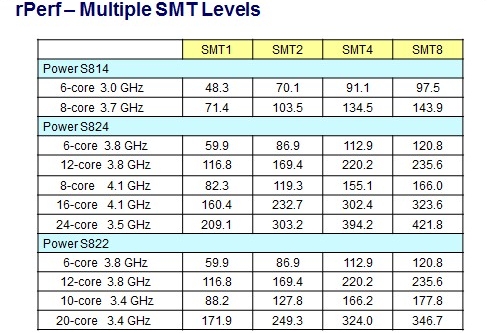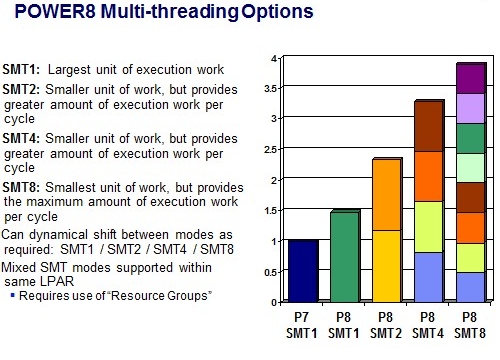SMT
Simultaneous multithreading (SMT) is a method supported by hardware CPU for improving of the overall computing CPU capacity.SMT permits multiple independent threads to be executed on the same CPU core at the same time to better utilize its resources.
IBM Power processors supports SMT technology since Power 5 (SMT2). SMT2 means that 2 independent threads can run simultaneously on 1 CPU core. Power 7 processors introduced SMT4 and Power 8 processors supports SMT8.
This feature usually allows multithreaded applications run faster with SMT. Not all applications are able to utilize this feature. Some applications runs faster with lower SMT or without SMT enabled. For this purpose, rPerf benchmark providing results for same CPUs with different SMT values.
CPU Workload Estimator (CWE) is a LPAR2RRD feature which is designed for projection of current LPARs or physical servers workload to another physical servers or new servers.
CWE uses for its estimations rPerf benchmark which might have big differences in benchmark values for different SMT settings.
LPAR2RRD v4.80 brings enhancement in CWE which takes into account actual SMT setting of LPARs in its estimations. This leads to more precise estimations.
Here is an example of some Power 8 servers rPerf benchmarks for all supported SMT levels. You can note big differences in rPerf values.


CWE is based on IBM Power Systems Performance Report and this reports does not contain all SMT values for all servers. In general all SMT values are available for Power 8 CPUs only. All previous CPU models have results only with their highest SMT supported values.
SMT in detail from IBM http://www-03.ibm.com/systems/resources/pwrsysperf_SMT4OnP7.pdf